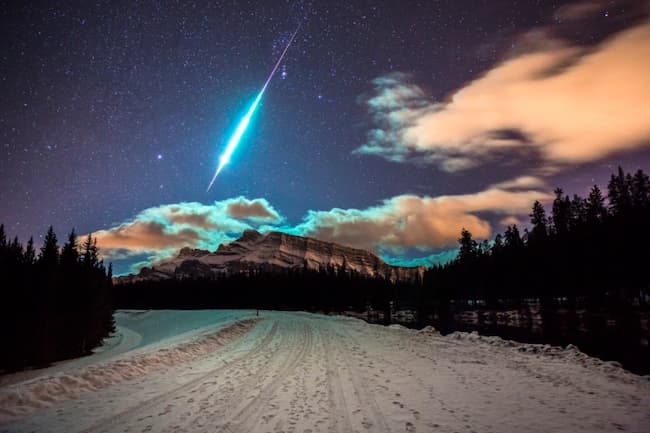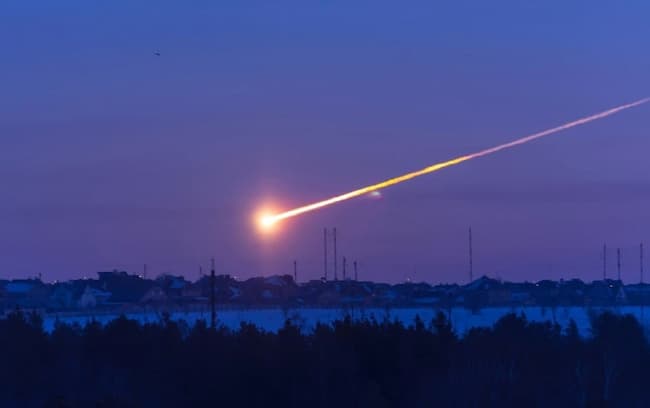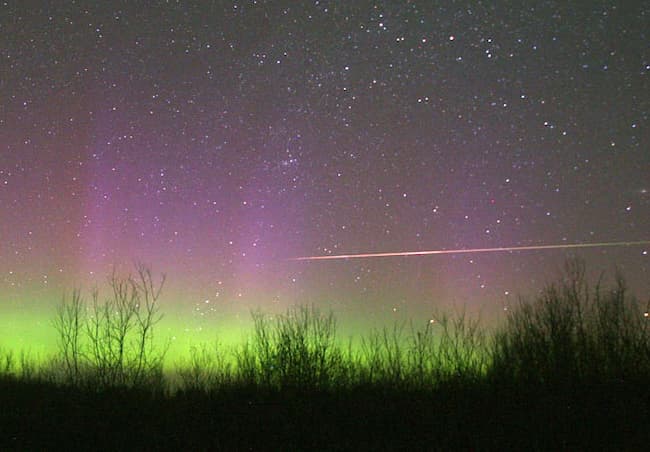Fireball is a brighter-than-usual meteor. There doesn’t seem to be a unified concept of what qualifies as “brighter than usual.” According to the International Astronomical Union (IAU), a fireball is a meteor that is brighter than any planet, with a magnitude of -4 or brighter.

However, the International Meteor Organization (IMO) provides a more specific definition, considering a meteor with a magnitude of -3 or brighter when observed at the radiant as a fireball. It is clear that even though you may see a relatively bright meteor, it may not necessarily be classified as a fireball according to the precise definition.
Daydreaming

Daydreaming while gazing at the stars and suddenly witnessing a brilliant streak with an impressive, long tail sweeping across the sky must surely be an exhilarating experience. There are approximately 500,000 fireballs each year, but most go unnoticed as they occur over the ocean or during daylight hours. Therefore, observing 1.2 fireballs during a meteor shower is already quite remarkable.
A fireball appears above Banff Rundle, Canada. Photo taken by Brett Abernethy A fireball is not the brightest meteor. From a magnitude of -14 or brighter (brighter than a full moon), a fireball enters a new category called a “bolide” (from the Greek word meaning “missile” or “flash”). Astronomers often use the term bolide to describe a meteor that explodes in the sky and produces noticeable sounds. Furthermore, if a fireball has a magnitude of -17 or brighter, it is referred to as a “superbolide.” Two prominent examples of superbolides are the Tunguska event in 1908 and the Chelyabinsk event in 2013, both of which occurred in Russia. It goes without saying that we can imagine the tremendous power associated with a fireball, always linked to disaster. However, from a different perspective, it is fortunate to witness it once in a lifetime.
Chelyabinsk Superbolide

Chelyabinsk Superbolide striking Russia on February 15, 2013. Estimated to be about 20 meters in size and weighing over 10,000 tons. The world will never forget the Chelyabinsk Superbolide event in the Russian Federation, which occurred at 9:20 a.m. local time on February 15, 2013. The light from this meteor was brighter than the Sun, and some people could even feel the heat as it approached the Earth’s surface. At an altitude of 30 km above the ground, it exploded, creating a shockwave and countless meteorite fragments falling to the ground. The estimated energy released by the explosion was equivalent to half a million tons of TNT, which is 20-30 times the energy of the atomic bomb detonated in Hiroshima in 1945. Approximately 7,200 structures in six cities were damaged, and 1,500 people were injured, mainly due to broken glass. This event marked the largest cosmic object to enter Earth’s atmosphere in over a century since the Tunguska event in 1908. It was also the most significant recorded meteor causing casualties. If it had hit the ground directly, the consequences would have been devastating!
EARTHGRAZERS AND METEOR PROCESSIONS

If you’re lucky, you may witness a fireball with a long, impressive tail, shining brightly, and appearing very low, possibly below the horizon. Gradually, it travels along the horizon and disappears. This phenomenon is called an Earthgrazer or Earth-grazing fireball, a fascinating type of meteor. The difference between an Earthgrazer and a regular meteor is that it doesn’t end its journey on Earth but grazes the Earth’s atmosphere and continues on its path.

